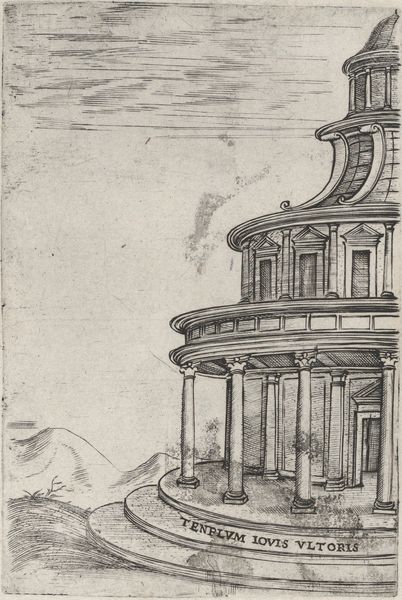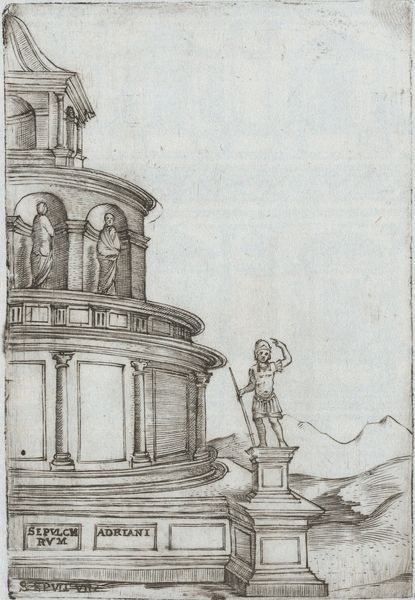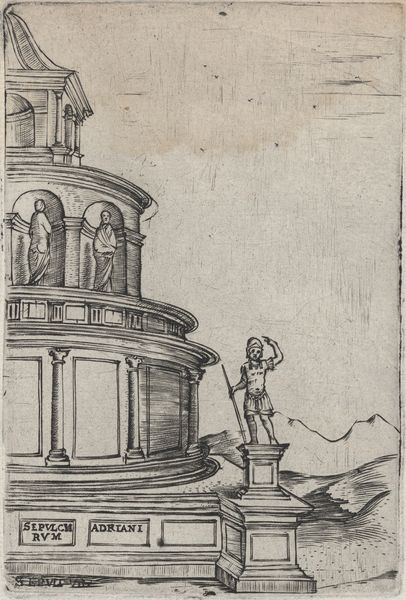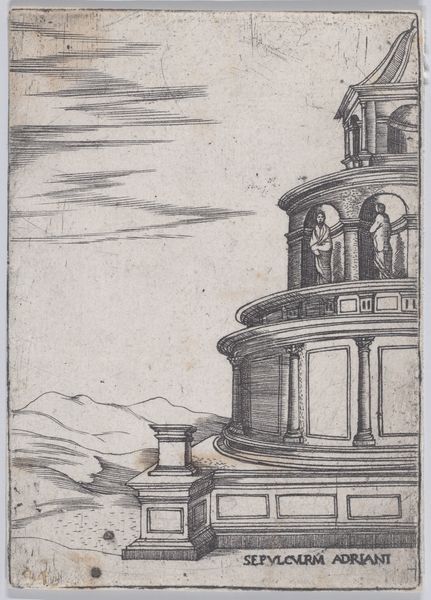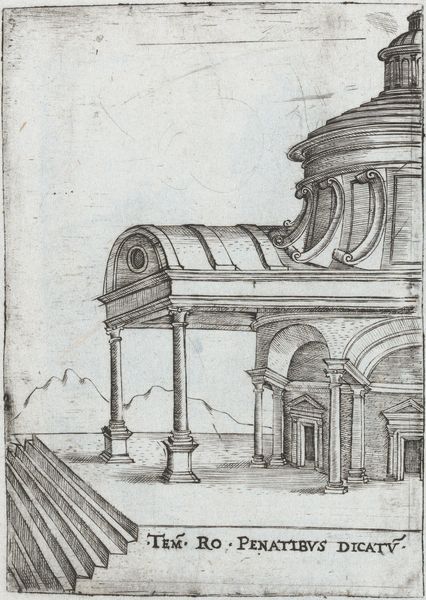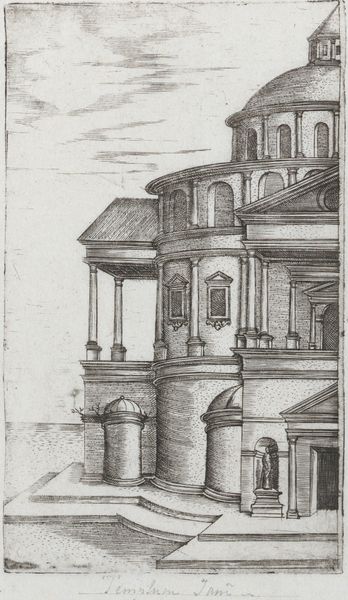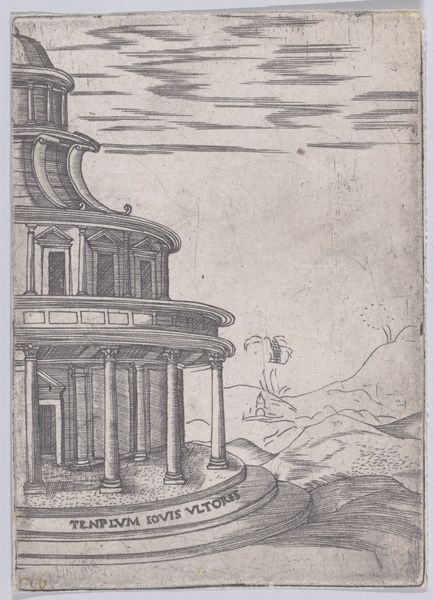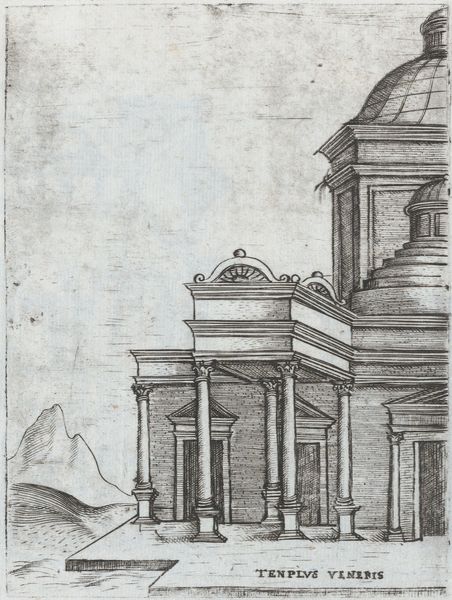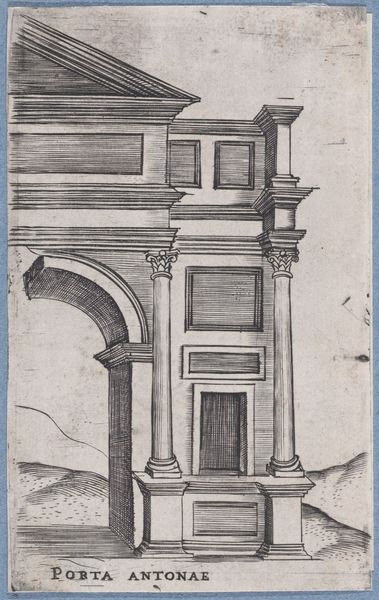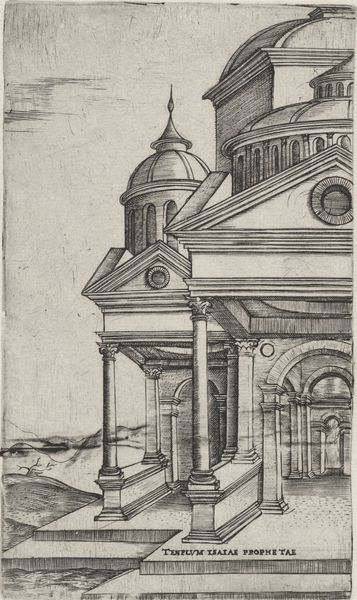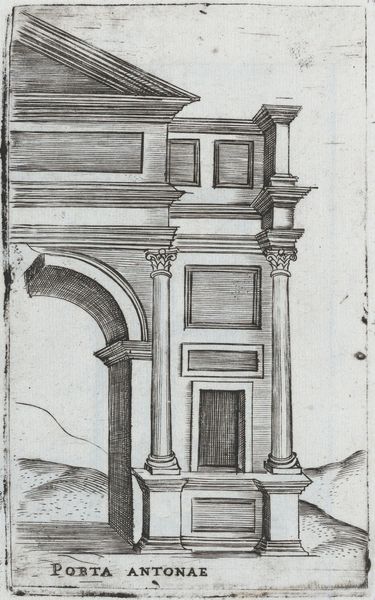![Teatrum Bordeos [Transitorium Caesaris in later editions], from a Series of Prints depicting (reconstructed) Buildings from Roman Antiquity by Monogrammist G.A. & the Caltrop](/_next/image?url=https%3A%2F%2Fd2w8kbdekdi1gv.cloudfront.net%2FeyJidWNrZXQiOiAiYXJ0ZXJhLWltYWdlcy1idWNrZXQiLCAia2V5IjogImFydHdvcmtzLzk0NmUyYmI3LTgyYmMtNDczYS04ZjEyLWQ3NzVlNmMwYjM1Ni85NDZlMmJiNy04MmJjLTQ3M2EtOGYxMi1kNzc1ZTZjMGIzNTZfZnVsbC5qcGciLCAiZWRpdHMiOiB7InJlc2l6ZSI6IHsid2lkdGgiOiAxOTIwLCAiaGVpZ2h0IjogMTkyMCwgImZpdCI6ICJpbnNpZGUifX19&w=3840&q=75)
Teatrum Bordeos [Transitorium Caesaris in later editions], from a Series of Prints depicting (reconstructed) Buildings from Roman Antiquity 1530 - 1550
0:00
0:00
drawing, print, engraving, architecture
#
drawing
# print
#
form
#
geometric
#
line
#
cityscape
#
italian-renaissance
#
engraving
#
architecture
#
building
Dimensions: Plate: 5 3/8 × 3 7/8 in. (13.6 × 9.9 cm) [edges of the plates are not straight, the height varies between 13.5 and 13.6cm]
Copyright: Public Domain
Curator: Here we have "Teatrum Bordeos," an engraving by Monogrammist G.A. & the Caltrop, created sometime between 1530 and 1550. It's part of a series reconstructing Roman antiquities. Editor: The sheer linearity and precision immediately strike me. It evokes a sense of aspiration, maybe even imperial ambition. Is this how they truly imagined it back then? Curator: Well, it is a reconstruction. Prints like these played a crucial role in shaping the Renaissance imagination of Rome, connecting it with contemporary architectural discourse, even bolstering imperialist narratives through art. The focus on classical forms also signified a rejection of medieval styles. Editor: Interesting. Note the inscription "TEMPLVM IOVIS VLTRORIS." The Temple of Jupiter the Avenger. It reminds me of similar structures, visual anchors meant to establish a specific kind of power and control, reminiscent of the Pantheon’s later impact. Do we know which buildings informed this image? Curator: Reconstructed ones. Prints often weren’t concerned with archaeological accuracy. This artist was more interested in conveying an idealized vision of Roman grandeur. Considering the historical moment, with the rise of European empires, this interest in Roman symbolism wasn't coincidental. It's hard not to see it within that framework. Editor: True. The symbolic language here, the round structure representing completion or divinity. But these details also contribute to the mythmaking process around Rome. What cultural messages would they then carry to 16th century viewers? Curator: The rediscovery of classical antiquity fueled new philosophical and political concepts during the Renaissance, redefining understandings of statehood and civic virtue, often along exclusionary lines tied to race, gender, and religious difference. Prints like these were crucial in visualizing and disseminating these concepts, in material terms. Editor: And so the image, beyond just architectural reconstruction, serves as a symbolic representation of power and authority. Very interesting, it makes me look at this architectural rendering not just as a pretty cityscape, but as a political tool. Curator: Exactly, the form echoes functions beyond mere aesthetics. It's always important to critically examine the social and political contexts within which these artworks are created and consumed. Editor: Precisely. What appear as aesthetic choices often bear heavier historical and symbolic weight.
Comments
No comments
Be the first to comment and join the conversation on the ultimate creative platform.
